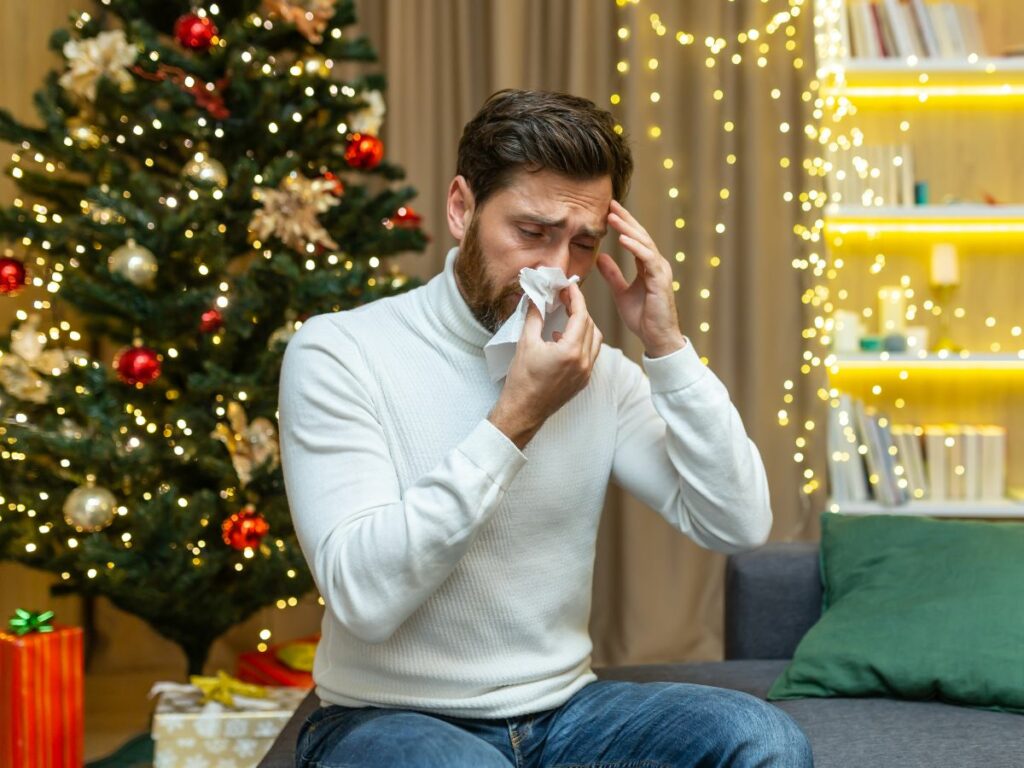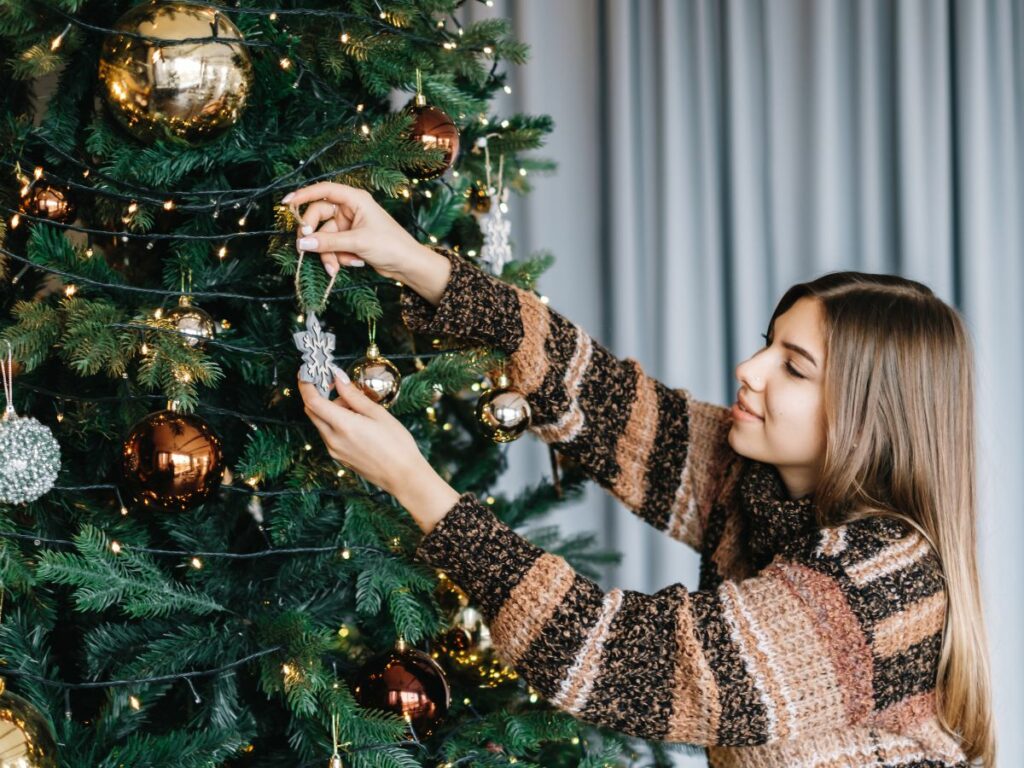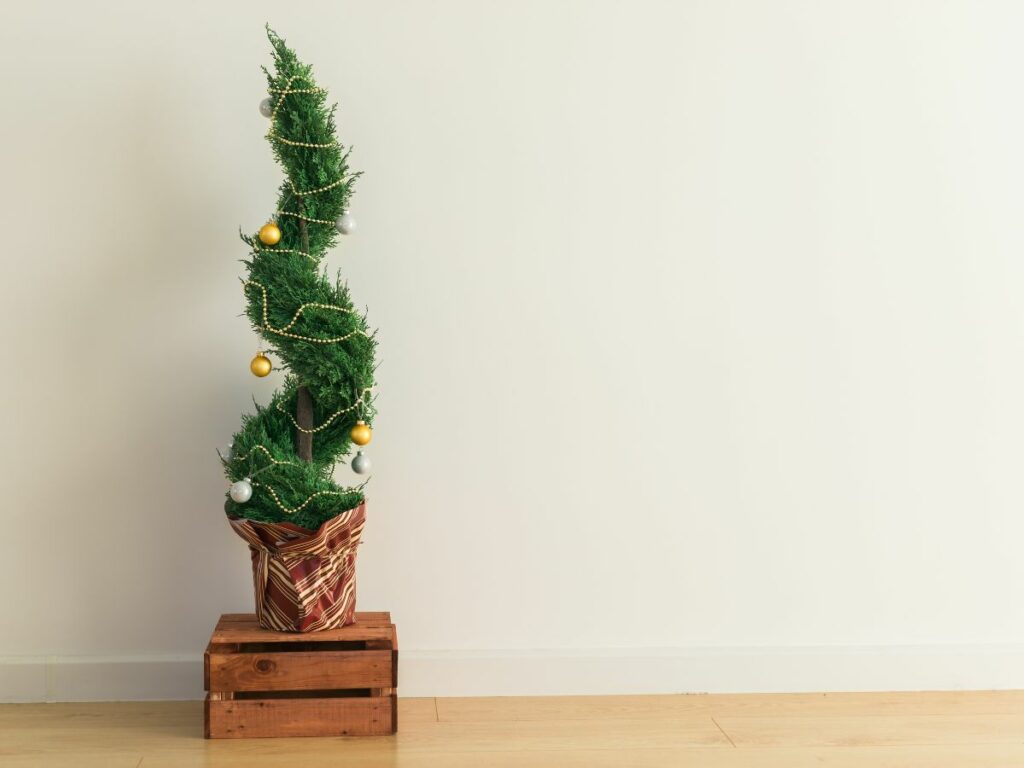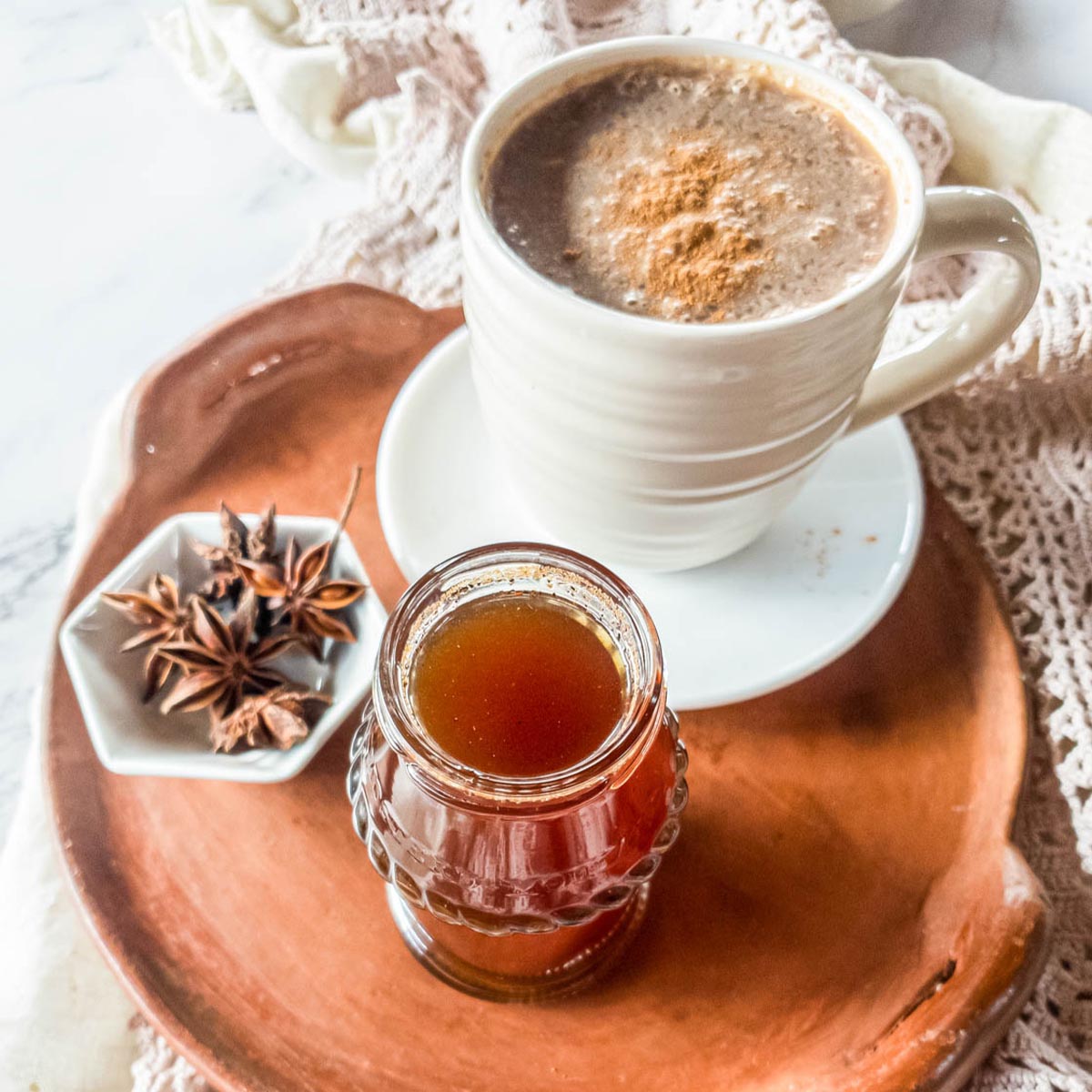Christmas Tree Allergy: Symptoms & What To Do for Holidays
As a participant in the Amazon Services LLC Associates Program and other affiliate programs, Easy Homemade Life may collect a share of sales or other compensation from the links on this page. This comes at no additional cost to you, and all the prices and availability are accurate at the time of publishing.
Watch out for Christmas tree allergies! You’ve diligently cleaned every nook and cranny of your home, banishing dust and allergens in preparation for the Christmas season. Yet, despite the thorough cleaning session, you still find yourself sneezing and sniffling.
You turn your attention to the centerpiece of your holiday cheer and a question fills your mind: Can Christmas trees cause allergies? If so, how?

Can Christmas Trees Trigger Allergy Symptoms?
If you find yourself sneezing and sniffing more often than usual, it might not be just the flu and cold season. You might be experiencing Christmas tree syndrome, a seasonal allergy that tends to flare up this time of year. Did you ever think an innocent-looking pine tree in the corner could be the culprit? Well, it could be. Pine tree allergies are among the most common triggers for symptoms like a stuffy nose during the holiday season.
Christmas trees harbor potential allergens that can compromise your immune system, triggering sneezing, runny nose, itchy nose, watery eyes, sore throat, coughing, breathing difficulties and even serious asthma attacks. Here’s how Christmas trees trigger allergy symptoms.
Pollen
Most trees produce pollen, and real Christmas trees—pine, spruce, and fir—are no exception. Even though they’re usually sold without their natural pollen-producing parts, they still carry trace amounts of tree pollen on their branches and needles.
When brought indoors, these fresh trees release residual pollen particles into the air. Allergen exposure triggers sneezing fits, itchy eyes, asthma symptoms and runny noses to those sensitive to pollen.
Mold
Research found that more than 50 different types of mold grow naturally on tree bark, limbs, and leaves.
Outside, mold plays a vital role in breaking down organic matter. But when you bring the real tree into a house with warm lights and central heating, the microscopic mold spores flourish and multiply at a significantly faster rate.
Like pollen, these spores become airborne when you decorate and handle the tree triggering mold allergies.
Chemical Treatments
Christmas tree farms often use chemical treatments to enhance the health and appearance of the trees. They use pesticides and fungicides to protect trees from insects, fungi, and diseases, and herbicides to manage weed growth around the trees. They may also use chemical shaping and pruning aids to enhance their aesthetic qualities.
While they aren’t true allergens, many of these chemicals can cause similar symptoms. Pesticides like organophosphates, for example, can cause wheezing and coughing. The same is said for herbicides that contain chemicals like glyphosate, which can result in respiratory discomfort and skin allergies.
Terpenes
The scent of Christmas trees, with its delightful blend of citrusy and woodsy, owes its charm to aromatic chemicals known as terpenes. Though rare, some people experience allergic reactions when they smell or come in contact with one of terpenes’ 30,000 compounds.
Linalool, pinene, limonene, and caryophyllene are the most popular terpenes associated with allergies. It probably doesn’t come as a surprise that these compounds are often found in fir, spruce, and pine trees.

Can Artificial Christmas Trees Cause Allergies?
So you’ve thrown out your live Christmas tree and replaced it with an artificial Christmas tree, but you’re still experiencing the same allergic symptoms. What gives?
The truth is that artificial trees can also trigger allergies, albeit differently from live trees. Setting up your essential oil diffuser with fresh woodsy oil blends is a surefire way to enjoy the fresh tree scent without getting a runny nose.
The culprits behind the artificial Christmas tree allergy are often dust mites, mold, and other allergens that accumulate on the tree during storage. These allergens become even more prevalent when the tree has been stored away in the basement or attic for the better part of the year.
You can also encounter these allergens when you purchase a tree from big-box stores. Store-bought trees are exposed to various environmental conditions before reaching your home, which can lead to the accumulation of these allergens.
To minimize the risk of allergic reactions, regardless of whether the tree is taken out from the attic or recently purchased from the store, clean it thoroughly outside before placing it inside your home. Here’s how:
- Detach the Christmas tree into sections and spray each section with a soap and water mixture. If the tree doesn’t come apart, use a garden hose equipped with a soap dispenser.
- Rinse the tree sections with a hose or in the shower using warm water.
- Let the tree air-dry completely before taking it inside your home.
For pre-lit artificial Christmas trees, use a soft-bristled brush or dry microfiber cloth to wipe off the dust and dirt from each branch. You can also use a canister vacuum with a brush attachment, a shop vacuum, or a handheld vacuum to speed up the process.

Tips for an Allergy-Friendly Holiday Season
If you’re prone to seasonal allergies, don’t worry; you can still bring the festive spirit into your living room with a Christmas tree. Sit down with a warm holiday coffee drink and understand the best way to navigate this potential allergy trigger is by following these tips.
- Properly inspect and clean live trees before bringing them indoors. Give them a thorough shake and a wash down to eliminate mold and spores.
- Instead of traditional Christmas tree species, like Norway Spruce or Douglas Fir, opt for allergy-friendly tree species like Concolor Fir and Leyland Cypress. These tree species don’t produce as much pollen as other species and have a milder scent.
- Some fake trees look as real as natural variants. They might be a bit more expensive, but this type of Christmas tree can last you years and minimize the risk of allergies when cleaned thoroughly.
- Use a tree skirt or barrier to catch falling dead needles and dust.
- An air purifier can help alleviate holiday allergies brought by Christmas decorations by removing indoor allergens and creating a clean and comfortable atmosphere.
- Dust or vacuum regularly to prevent build-up. Use a HEPA filter-equipped vacuum cleaner and HEPA filters to reduce allergens in indoor air.
Wrapping Up
You can remedy Christmas tree allergies with a few important hacks. As the festive season approaches, a lot of people are putting up their own Christmas trees, hanging winter wreaths and bringing out winter centerpieces. While the tradition brings joy, people who have sensitive skin and are sensitive to pollen, dust, and mold spores should be extra cautious around Christmas trees, regardless of whether they’re live or artificial.
Choosing the right tree species and proper maintenance can mitigate these symptoms. If pine pollen triggers your Christmas tree allergies, opt for a spruce, fir, or cypress tree like Leyland Cypress or Concolor Fir. To minimize the risks even further, your better option is getting a high-quality artificial tree—specifically ones made from hypoallergenic materials.








I’ve suffered through sniffles for years because I love the smell of a live tree. This year I’m taking your advice of putting up an artificial tree and using a diffuser to get the festive smell. Hoping this will let me enjoy the holidays without going through a dozen boxes of tissues.